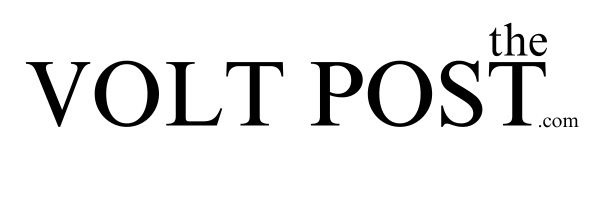 Like many innovative ideas, the concept of the Blue Green economy has no specific origin or author. It has been partly born out of the ingenuity of creative minds and partly by the necessity of societal imperatives. Conceptions of Blue Green Economies are different from the Oil & Gas economies, in the fact that their core focus is not only on economic value but more wide-ranging values of people and the planet.
Like many innovative ideas, the concept of the Blue Green economy has no specific origin or author. It has been partly born out of the ingenuity of creative minds and partly by the necessity of societal imperatives. Conceptions of Blue Green Economies are different from the Oil & Gas economies, in the fact that their core focus is not only on economic value but more wide-ranging values of people and the planet.
This piece is a retrospective of the journey of this concept from concerns of nations into international organizations and finally into one of the emerging goals of the global economy.
The concept of the Blue Green economy found traction around the Third Earth Summit Conference at Rio+20 held in the year 2012. At the time the world was just recovering from the Financial Crisis of 2008 and there was a renewed interest in the idea of Climate Change as the first commitment period for the Kyoto Protocols were coming to an end.
The same year the Arctic polar ice caps shrank to their smallest summer minimum since satellite data were being gathered, greatly stressing the urgent need for human economic patterns.
Green Economy Brings an 18th-Century Idea to Limelight
The idea that the earth has limitations and cannot infinitely fulfil humanity’s growing demands is not new.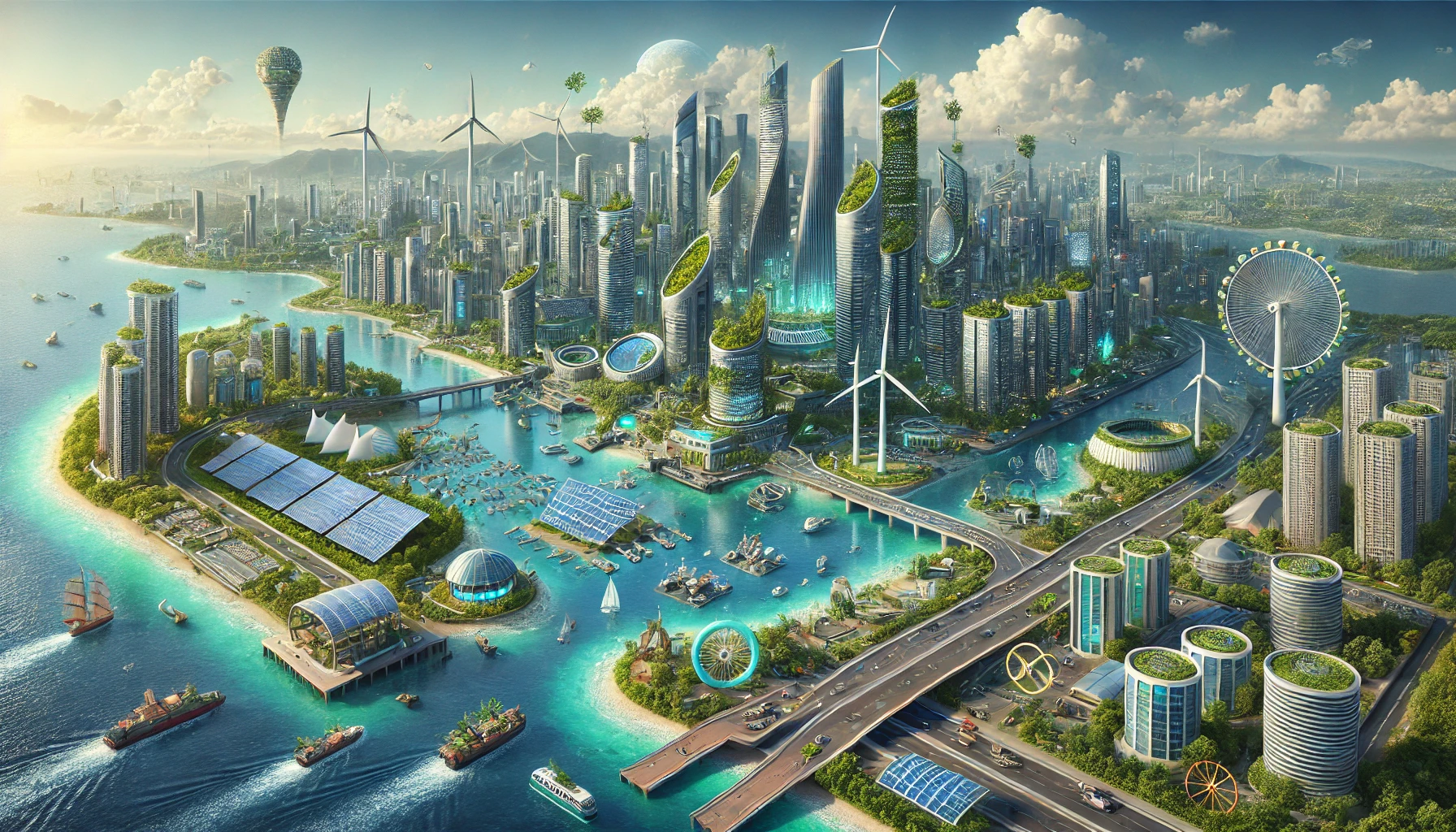
Actually, it finds its basis into the very foundations of modern science and political economy. Thomas Malthus in the 18th Century was one of the first to draw attention to the idea that Social and Environmental Systems have limitations and that over-exploitation of resources one can often impact society devastatingly.
His foundational essay about the scarcity of resources, titled “An Essay on the principle of population” (1798) went on to have far reaching impacts on the world. His work influenced Charles Darwin and lead to the birth of the Theory of Natural selection and Evolution. Similarly on the negative side, it influenced the East India company’s thinking on famines and lead to the policy decisions that created and exacerbated the horrific famines, of Bengal, Bihar and Odisha in British India the 18th Century.
But more recently, the concept of a Green Economy finds its origins in the report commissioned by the globally influential pressure group Club of Rome, titled Limits to Growth in 1972. The Ground breaking report powered by the MIT World3 Computer Simulation model predicted a hundred (100) year limit for industrial growth or worst. But the idea for Green Economy found final global acceptance through the UK Government report titled ‘Blue Print for a Green Economy.’
As the idea of the Green Economy filtered through the international system; in October of 2008 in response to the Green Stimulus packages that were being proposed by Multilateral organizations, United Nations Environment Programme (UNEP) launched the Green Economy Initiative, that locked in the nomenclature and taxonomy for the Green Economy.
Presently there is a broad consensus around the UN’s definition of Green Economy “as [a] low carbon, resource efficient and socially inclusive” system, the definition further states that:
“In a green economy, growth in employment and income are driven by public and private investment into such economic activities… that allow reduced carbon emissions and pollution, enhanced energy and resource efficiency, and prevention of the loss of biodiversity and ecosystem services.”
Interestingly, to truly understand the global importance of the Green Economy movement, we have to keep in mind that although the Green Economy Initiative is anchored in the United Nations Environment Programme (UNEP), it has been declared to be one of the nine (9) UN-wide Joint Crisis Initiatives (JCI) launched by the UN System’s Chief Executive.
This JCI status means that the Green Economy is now a priority issue of all UN member organizations, agencies and partners, making it one of the core policy initiatives of the international system, beyond the Global North where it originated.
This lets us to conclude that there is no single author to the idea of the Green Economy, the limits of the extractive economic model have often led visionary people to warn humanity about dangers of unregulated exploitation of nature and her systems.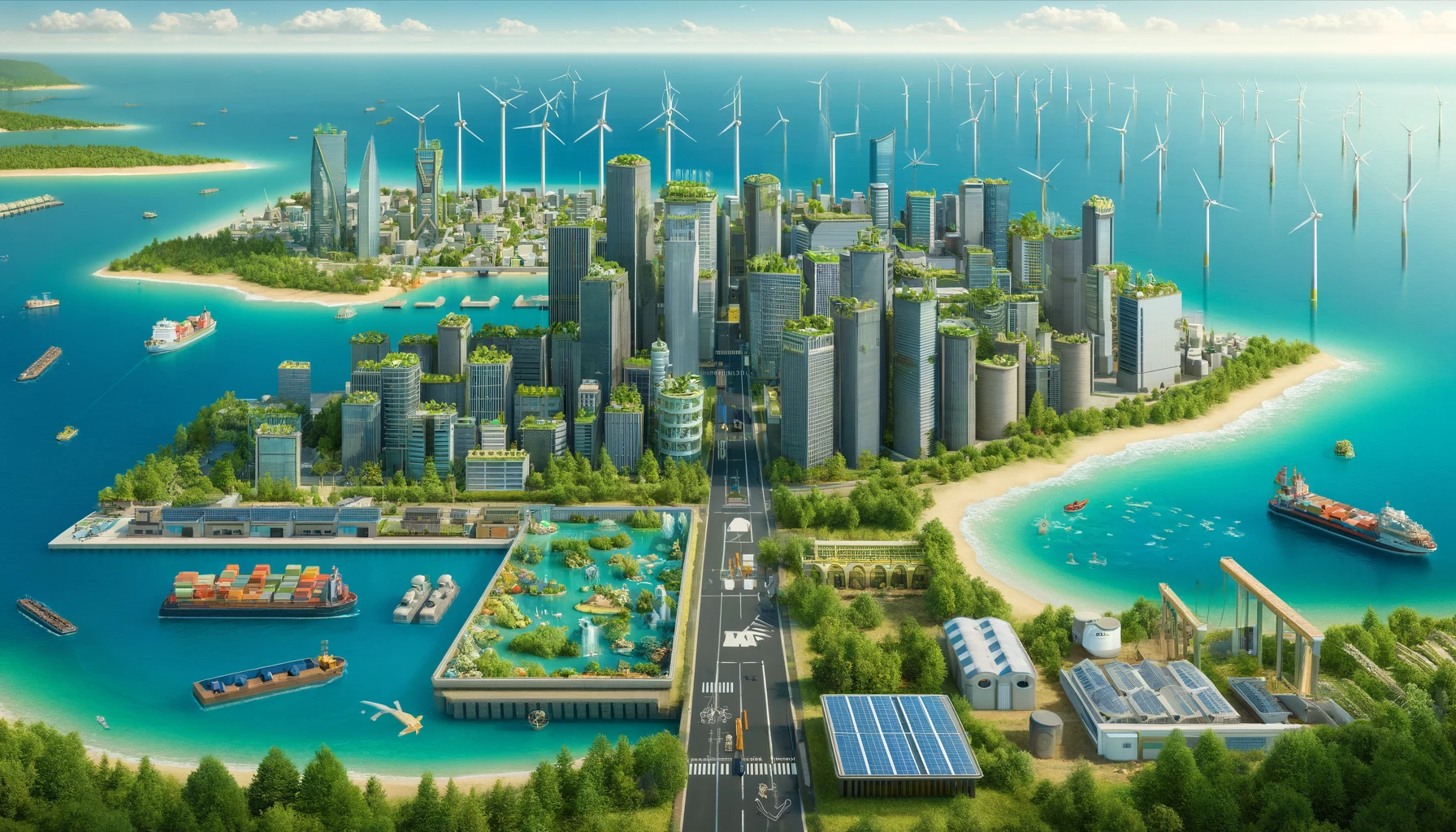
Blue Economy: A Nascent Development
The concept of the Blue Economy is fairly new and novel concept and it took the development of a high level of human maritime knowledge before Ocean economy could be projected as a viable alternative economic model to the land economy.
The term finds its present ocean centric use from the Rio + 20 events, where the concerns of the Coastal nations and Small Island Developing States (SIDS) lead to the development of the Maritime Economy based model of Blue Economy; as a parallel alternative and constitutive part of Green Economy.
Blue Economic thinking is a pivotal change from seeing the Ocean as a space from which to extract free resources and polluting it at will, to seeing it as viable and critical part of the Global commons, needing planning, management and representation in the global economic and policy decision making.
The core difference between the Blue Economy from Green Economy is the fact that it has all the low carbon, human development, environmental and equitable national and social concerns as Green Economy but has the ocean core at the core of its perspective.
This is done keeping in mind developing nations and their present and future needs of efficient and equitable use of ocean resources. This understanding is tangentially different from the concept of the Blue Economy of the innovator Gunter Pauli, who is often credited for the coinage.
Actually, Gunter Pauli’s allied view on systemic and sustainable reorientation of the global economy towards nature-based solutions, mentioned in his book The Blue Economy: 10 Years, 100 Innovations, 100 Million Jobs. Where he conceived Blue Economy as referring to the primary colour of the earth seen from Space. While not focusing on only the oceans Pauli’s economic model stresses on (a) open-source solutions (b) which are localized and (c) inspired by nature. Thus helping move humanity from a Scarcity driven model to an abundance informed model addressing the concerns of Malthusian thinking and Club of Rome’s warning.
This brings us to the issue of Blue Green Economy in the present and its possibilities for the future.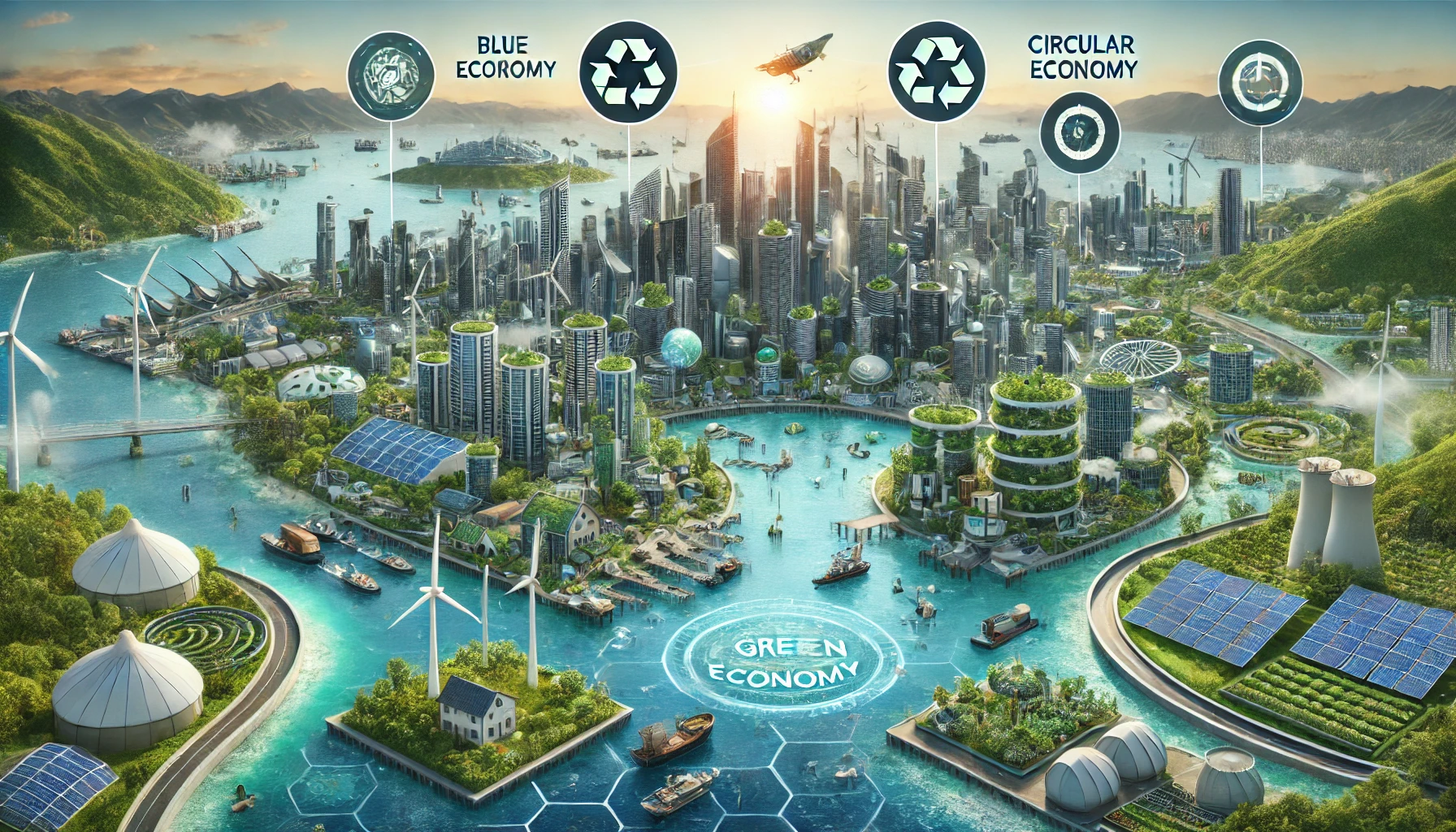
Blue Green Economy: The Genesis
Finally, it brings us to the last and most important leg of our journey, that about the origins of the Blue Green Economy concept. Blue-Green Economy is actually a more holistic articulation of the core developmental logic of the Blue Economy and its interface with the problems of just transition and Climate Change on Land.
And it is a very important global economic feature, as oceans are over seventy (70%) of the earth’s surface area and have about ninety-five (95%) of all its biological resources and through them providing critical ecosystem services.
If the economic value was to be quantified, then the size of the Ocean Economy at market prices will be about 3 trillion Dollars according to the UNCTAD making it the 7th Largest Economy in the world. Among the BRICS nations China is a leading investor in the Blue Economy and is poised to become its top investor by 2050. But the original proponents of the concept of the Blue-Green economy are actually mostly Small Developing Island States ( SDIs) and coastal developing nations.
This brings us to the important question of the genesis of the concept of Blue Green economy. It is very difficult to point to the very first usage of the term Blue Green economy in policy documents but both Blue and Green economies are extensively mentioned in all the policy documents that emerge around the 2012, Rio +20 Summit.
Green Economy is mentioned about 30 times in the Political Outcome Document of the Rio +20 Summit and Oceans are mentioned about 17 times, pointing to the comparative importance of both the concepts. It is here in Rio that the 17 Sustainable Goals were ascertained and both Green and Blue got their respective SDG 7 and SG 14 nomenclature.
But the real magic of creation happened through the concerted efforts of Small Island Developing Nations which came together to forge the SIDS accelerated Modalities of Action also known as the Samoa Pathway after the Third International Conference on Small Island Developing States (SIDs), at Samoa in 2014.
These small island nations facing the brunt of the rise in Ocean level due to Climate Change, and also dependant on Ocean resources for their GDP; decided on the principles through which they wanted both the green and the blue economies to help meet their current and future needs. The SIDS went on to state in the Samoa Document that: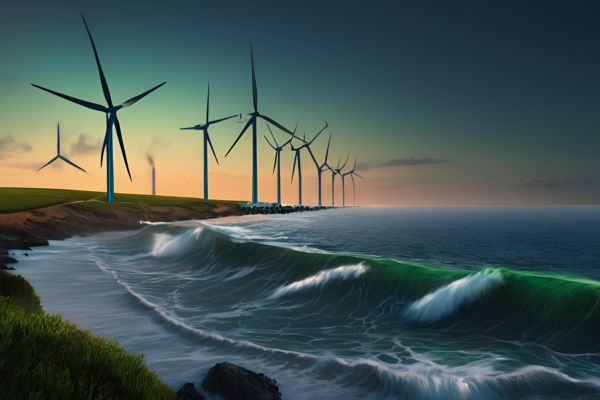
“Small Island developing States have demonstrated strong leadership by calling for ambitious and urgent action on climate change, by protecting biodiversity, by calling for the conservation and sustainable use of oceans and seas and their resources and by adopting strategies for the promotion of renewable energy”
This might be first time the core philosophy of Blue Green Economy was succinctly and clearly articulated in the international fora. Blue Green Economy connects the broad concerns of Climate Change, Ocean Preservation and the need for Renewable Energy and Low Carbon Pathways to growth.
For the SIDS, sustainable Ocean based economies were at the heart of their demand for the world. Which was later supported by the Food and Agriculture Organization (FAO). The organization recognized a healthy ocean as bedrock of a functioning Blue economy;which begins with stopping the pollution of the Ocean systems through an unregulated terrestrial economy.
Many of the larger maritime groupings like the European Union (EU) and the Organization of Eastern Caribbean States (OECS) further clarified this position in various documents by pointing out the synergies and complementarities, between the Blue Economy and Green Growth.
In the 2020 seminal St. Georges Declaration 2040, the OECS states have declared that only one viable way for the world to thrive in the face of unquestionable Climate Change is to “transition to a blue-green-circular economy.” Ensuring that the concept of Blue-Green Economy is widely understood as one of the seminal world views of the 21st century.
India, Indonesia and Maldives are among the more important Indo-Pacific economies that have declared Blue-Green Economy in the last five years or more. Pointing to the fact that the Concept of Blue-Green Economy is emerging as one of the era-defining economic principles for the next twenty (20) years.
India, was one of the first movers in both the concepts of Green and Blue Economies and despite technical deficits and implementation challenges. The nation historically has made consistent efforts towards addressing the needs of the Green and Blue Economies. For example, among developing nations India was the first nation to have a National Committee on Oceanographic Research in the 1960s.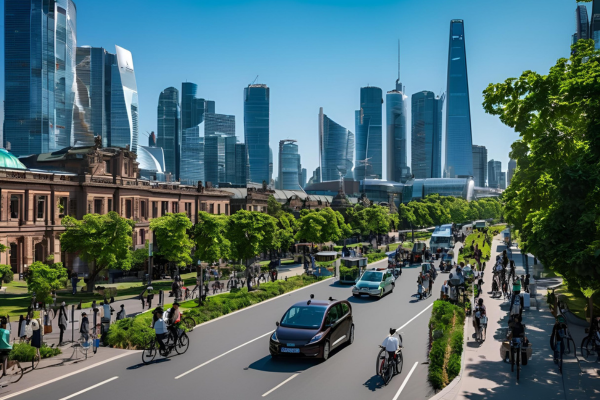
Since then, India has maintained its pioneering attitude towards the seas, India has a Draft Policy on the Blue Economy and in Jan of last year (2024) the finance minister has tabled a policy document on the Blue Economy 2.0 for India.
The country has already met about 40% of its 2030 Renewable Energy commitments pointing towards the deep political will behind her Blue-Green Economic initiatives. The Hon’ble PM of India has initiated a slate of maritime, port and Green Hydrogen projects in the Coastal states of Andhra Pradesh and Odisha recently, pointing to the emergence of Blue-Green Economy as a core geo-economic strategy for India; the fastest growing economy in the world.
About the Author:
Soham | Senior Partner | Inclusive Dialogue. Soham is a senior policy and research professional, having worked in India and USA on Energy and Labour policy. He has worked with the Govt of India in various capacities at Invest India & Dept of Commerce. Presently, he has Co-Founded a Policy & Design Studio (Inclusive Dialogue) with two senior professionals from the media and tech Industry. Inclusive Dialogue operates at the interface of Climate Change, Energy and Public Health, solving public problems using private initiative.
References:
- https://www.gatewayhouse.in/wp-content/uploads/2017/06/FICCI_Blue-Economy-Vision-2025.pdf
- https://incois.gov.in/documents/Blue_Economy_policy.pdf
- https://sustainabledevelopment.un.org/rio20
- https://greengrowthindex.gggi.org/wp-content/uploads/2022/03/Mar-18_Green-Blue-Growth-Index.pdf
- https://sustainabledevelopment.un.org/content/documents/2978BEconcept.pdf
- https://www.un.org/en/conferences/small-islands/apia2014#:~:text=The%20Third%20International%20Conference%20on%20Small%20Island%20Developing,in%20view%20of%20their%20unique%20and%20particular%20vulnerabilites.

